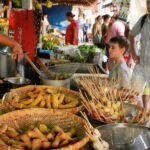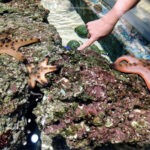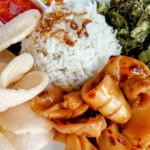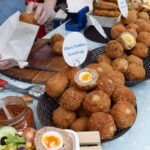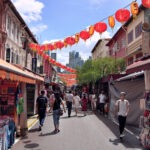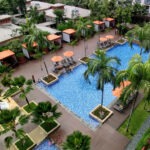I needed help on what to eat in Singapore (and how to avoid tourist traps), so I teamed up with a local Singaporean Food Blogger, Zhou Zhenru to get the best tips for you, and for me. If you’d like to read more on food in Singapore, find Zhou at her site, Greedy Girl Gourmet, or on Instagram.
I also need to thank another Singaporean Lady, my son’s former teacher, who has been showing me her food highlights on Instagram for the last couple of years. Most of the Indian food recommendations have come from her. You know we love Indian food, most of our previous visits to Singapore have involved eating in Little India, but she has been able to show me where the local population of Indian origin eat. So let’s get into food in Singapore!
Most of this post is written by Zhou. I’ll add our findings and photos as we go! Zhou starts.
What To Eat in Singapore, and Where To Find Them
“Eating is pretty much the national pastime in Singapore- I kid you not: I gained over 10kg when I moved back to Singapore from the UK! (Also a job hazard of being an Asian food blogger.)
However, like all countries, there are some tourist traps, so here is a list of recommendations of 7 things to eat, and where to find it, to make the most of your time on this little tropical island. (This is not an exhaustive list, by the way, as there are simply too many things to eat in Singapore!)
What You Need to Know About Singaporean Dining Before You Go
The cheapest place to get food in Singapore is at hawker centres. (Also the best place for authentic local dishes, but note that Singapore is more expensive than its Southeast Asian neighbours.)
With over 100 hawker centres and markets, you’ll be spoilt for choice. However, prices can vary quite a bit, from US$2.20 for a bowl of noodles to US$22 (quite rare)!
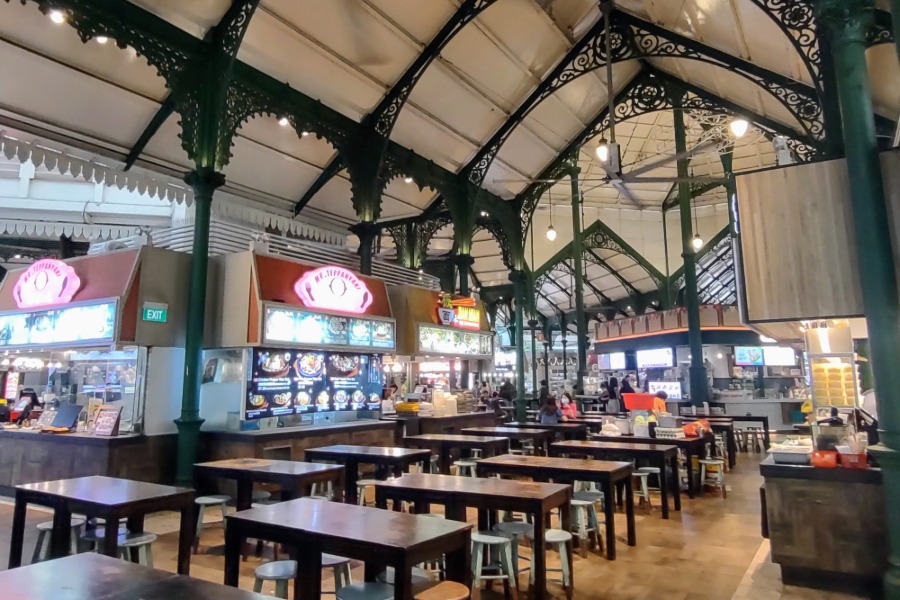
“Hawker centres that are considered tourist traps include Newton and Lau Pa Sat– this doesn’t mean that the food is not good, by the way- I often eat at Newton myself- just that the prices at these places are on the higher end.
Some of the more “local” hawker centres can be a bit of a shock to the Western system, as they can be quite noisy, crowded, and wet. If you prefer to dine at a more aesthetically pleasing hawker centre, Newton, Lau Pa Sat, East Coast Lagoon Food Village, and Zion Food Centre are worth considering.
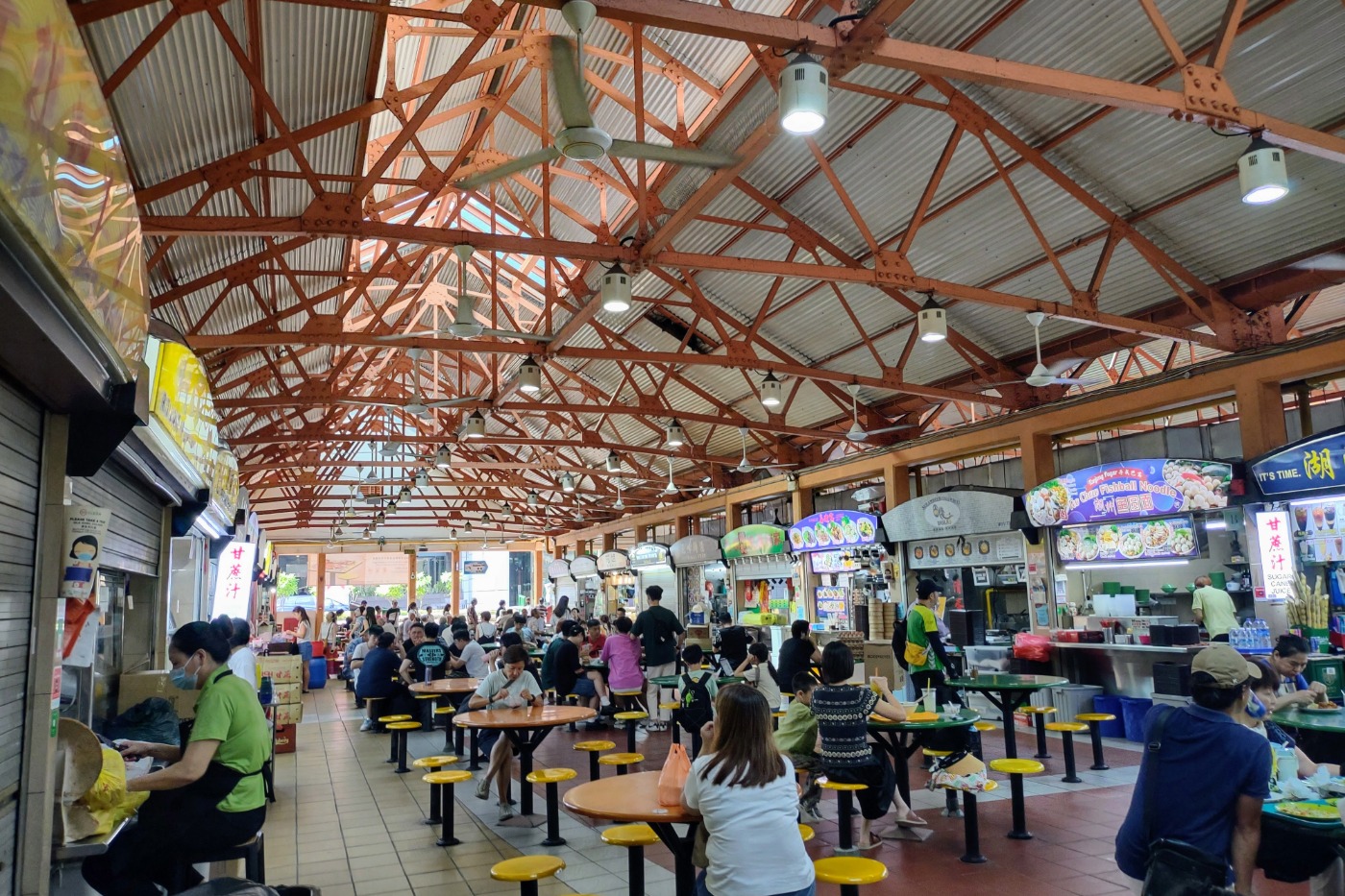
Newton has been famous for decades and was featured in the movie Crazy Rich Asians.
Lau Pa Sat is housed in a gorgeous historic building.
East Coast Lagoon has a beachfront location.
Zion Riverside Food Centre is, well, by the Singapore River! It’s not very big but it does have a few good stalls. I’m quite fond of the (savoury) carrot cake there, although note that the hawker is deaf so you’ll have to use sign language to communicate.
If you’re looking for the “best” hawker centres i.e. the ones that have the most good food, try Tekka, Old Airport Road, Hong Lim, Geylang Serai, Chinatown Complex, Tiong Bahru, or Maxwell (to name a few- there are many other good ones!)
Apart from Old Airport Road, they’re all quite near tourist attractions.
Many hawker centres do not open on Monday. In addition, many start the day early and close in the afternoons/ evenings (after they’ve sold out their food.) There is also scheduled maintenance and cleaning for hawker centres- during which the entire centre will be closed- so Google before you go.
You can also find local food in air-conditioned food markets, which are called food courts in Singapore. They used to be like upmarket hawker centres, with air-conditioning. However, the standard of food served at food courts has declined drastically in the last few years, what with the advent of central kitchens, so I don’t really recommend them (if you’re looking for the tastiest Singaporean food.)
Instead, for Chinese food, I would suggest going to “Zi Char” restaurants (I’ve suggested a few below.)
Hawker Food Centre Near Marina Bay
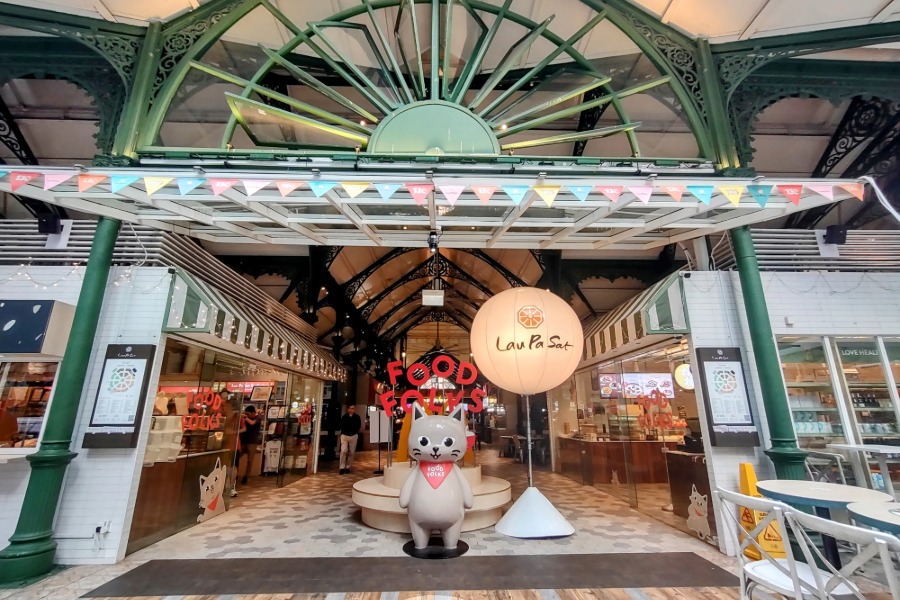
Alyson says: Lau Pa Sat Hawker Centre is an easy walk from the Marina Bay Area. There are plenty of others nearby, but this was the one we liked most. Zhou says it’s more expensive because it attracts tourists, and she’s probably right! It’s a nice place, we thought. We sampled multiple dishes, dumplings, noodles, duck, and a few sweet treats.
Typical Singaporean Dishes To Try
Bak Chor Mee
“Singaporean food and Malaysian food are very similar, and we have many of the same dishes. (You’ll see many Singaporeans and Malaysians fighting over where a dish originated on social media!)
However, Bak Chor Mee (or Minced Meat Noodles) is a dish that is probably unique to Singapore. It’s also one of my favorite Singaporean hawker foods!
Where to Eat Bak Chor Mee
Hill Street Tai Hwa Pork Noodle at 466 Crawford Ln, #01-12, Singapore 190466: this outlet has a Michelin star so the queues can get quite long. I would say that the food is cooked to perfection- the noodles just al dente, and the meat perfectly spring- however, the taste is slightly different from the typical Singaporean Bak Chor Mee noodle, so I would recommend trying some other stalls too. The cost is higher than the usual hawker stall too, at about US$4-8 (depending on the size you choose.)
Xing Ji Rou Cuo Mian or Seng Hiang Bak Chor Mee at Fengshan Market/ Bedok 85, #01-07 Bedok North Rd, 460085: Bak Chor Mee is usually a dry noodle dish in Singapore, which is how I prefer to eat my noodles. However, these 2 stalls serve a soupy version that is so fragrant, I travel all the way to the eastern end of Singapore to get them. The Market is not in a touristy area, but is quite close to the airport, so could be worth a stop when you arrive/ on the way to the airport when leaving! Prices are more inline with the average hawker price, around US$2.60-US$3.40 per bowl.
Alyson says: I remembered that Zhou had recommended “beef noodles” but I had forgotten the name bak chor mee, and missed that they were pork. Writing the names of the dishes on a piece of paper didn’t help, I left it at the hotel. I found a hawker stall that was claiming to be in the Michelin guide, it was selling beefy-looking noodles. I ordered, S$6 a bowl. Whatever it was, the food was inedible (to me). It tasted like fishy instant gravy with spaghetti with bread as a garnish. I said to D that it looked like the dog’s dinner. He said it looked like something the dog had already eaten! This is just an example of how badly ordering food can go if you don’t know what you’re doing! (see the photos below). This is why we struggled so much with Singaporean food on previous visits, but did great with Indian. We know our way around an Indian menu! We never tracked down the Bak Chor Mee, unfortunately. That’s one for next time.
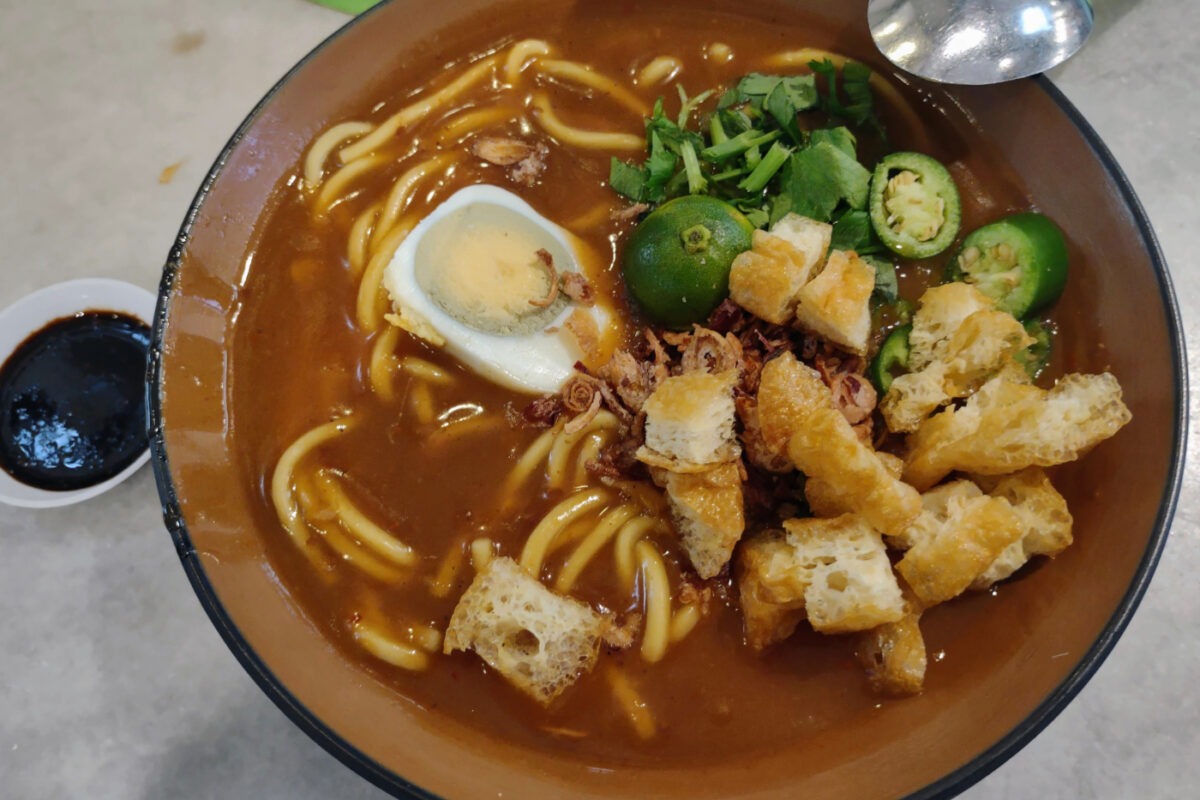
Wanton Noodles
Singaporean wanton noodles are very different from the ones you get in Hong Kong. The sauce is much more savoury.
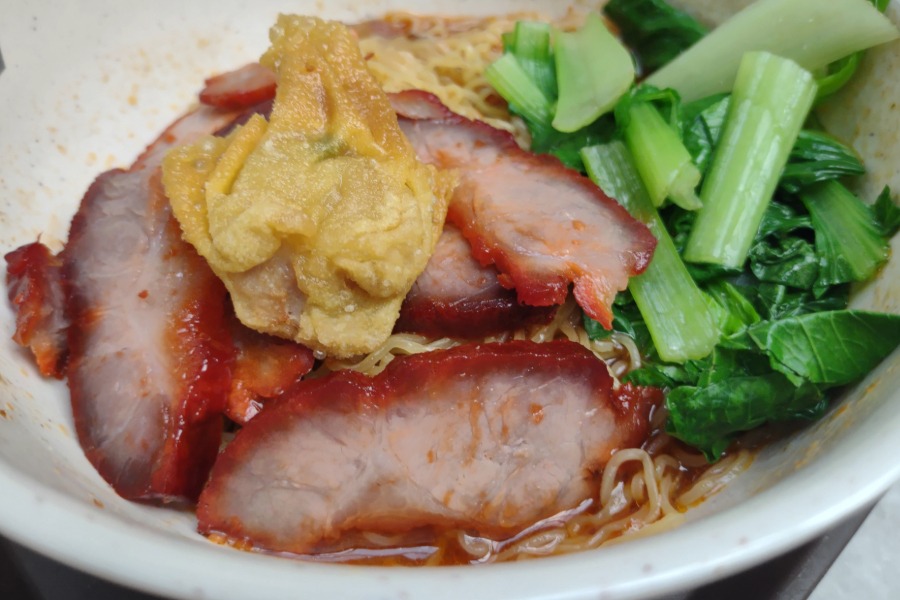
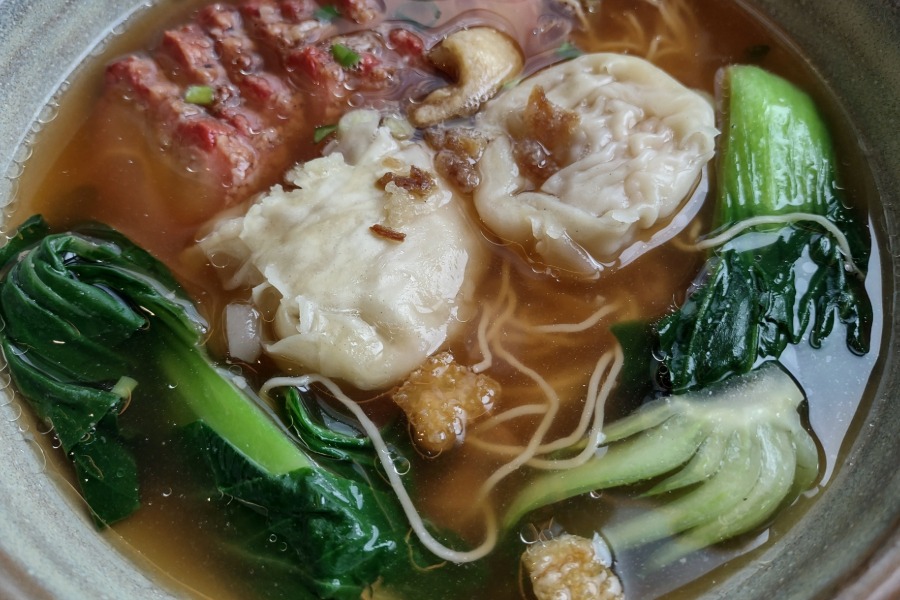
Where to Eat Wanton Noodles
Laifaba 02-02 Bukit Batok Cres, Prestige Centre, 71, 658071: my favourite wanton noodles are from Laifaba, which is a little coffee shop out in the middle of nowhere. (It’s quite far out from the typical tourist’s path.) The price is quite a bit higher than the typical hawker centre (they also charge GST and service charge, which is not imposed at a hawker centre) but the char siu is one of the best I’ve had outside of a hotel and the ambience is a lot better too. (For one, there’s Air Conditioning.) Expect to pay about US$9 for a bowl of noodles here. (I recommend only the dry wonton mee and NOT the soup version, as I find the soup and dumplings here a bit bland.)
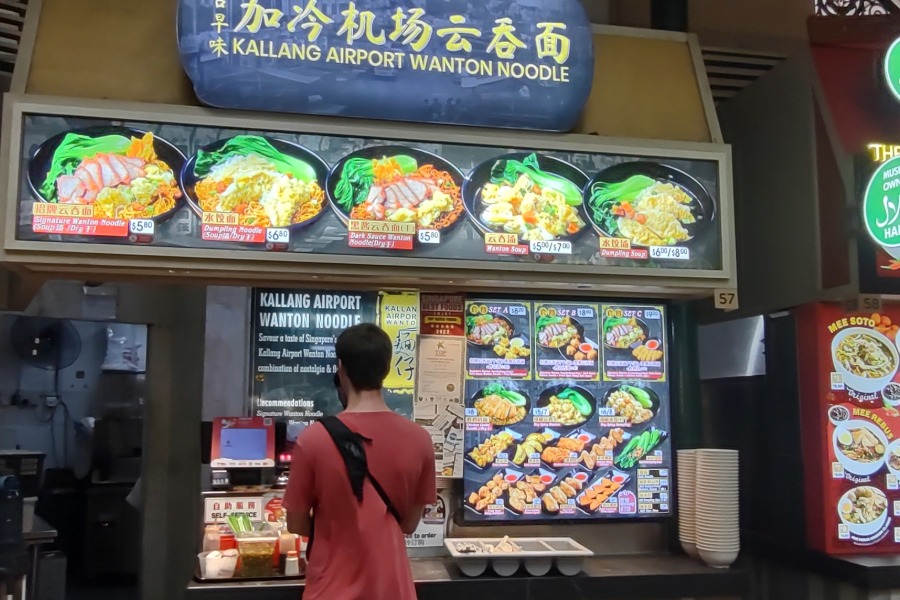
Bak Kut Teh
This is basically a Chinese pork soup, best enjoyed with rice and you tiao (fried doughsticks.) Simple though it sounds, it’s one of my favourite Singaporean foods!
There are two versions: a herbal one and a peppery one. Even some Chinese people do not like the herbal version, so I would suggest starting with the peppery soup, and you can always try the herbal soup later!
If you like it, you can even buy the spice packet from the supermarket: you simply have to add water, pork ribs, and garlic, boil, and you’re done!
Where to Eat Bak Kut Teh?
Ya Hua
Song Fa
Ng Ah Sio
They all have more than 1 outlet, so I suggest choosing based on your location. If you want nicer surroundings, I would suggest Song Fa, as they have outlets in shopping centres. (Ya Hua and Ng Ah Sio tend to be located in shophouses.) Expect to spend at least US$10-20 per person (or more, if you choose the more premium cuts of meat, and order more side dishes.)
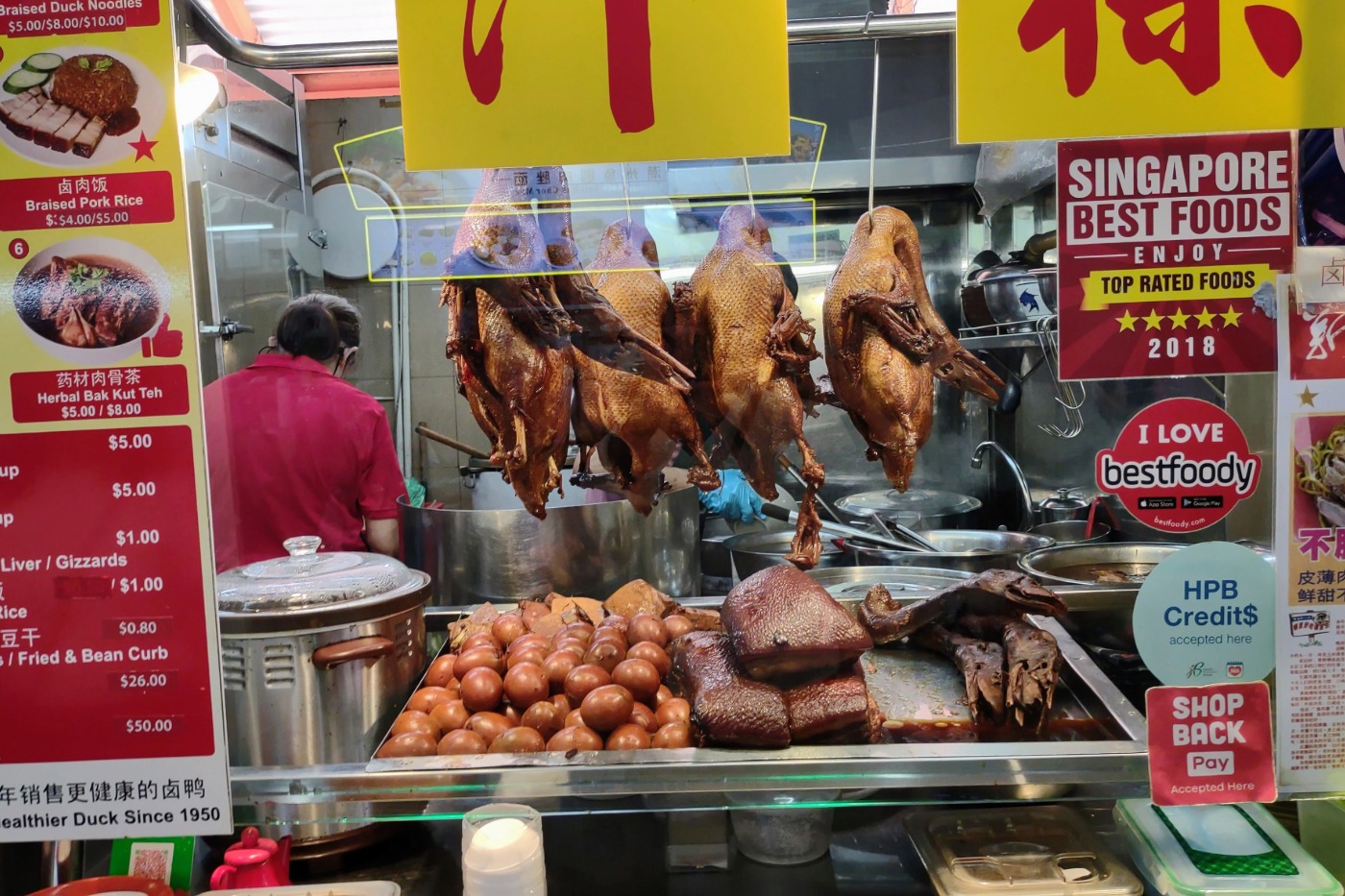
Alyson says: I think we tried this pepper pork soup in Bangkok Chinatown on our night market food tour. If so, we quite liked the soup. The deep-fried dough (which is in the Michelin guide in Bangkok) was a hard pass for me. The kids liked it. While editing the photo above I noticed the herbal bak kut teh on the menu, left. We missed it in real life!
Nyonya Food
Nyonya Food, also known as Peranakan or Straits-born Chinese Food, is a fusion cuisine created by the blending of Chinese and Malays. It shares many common dishes with Malay cuisine, but is distinguished by its use of pork.
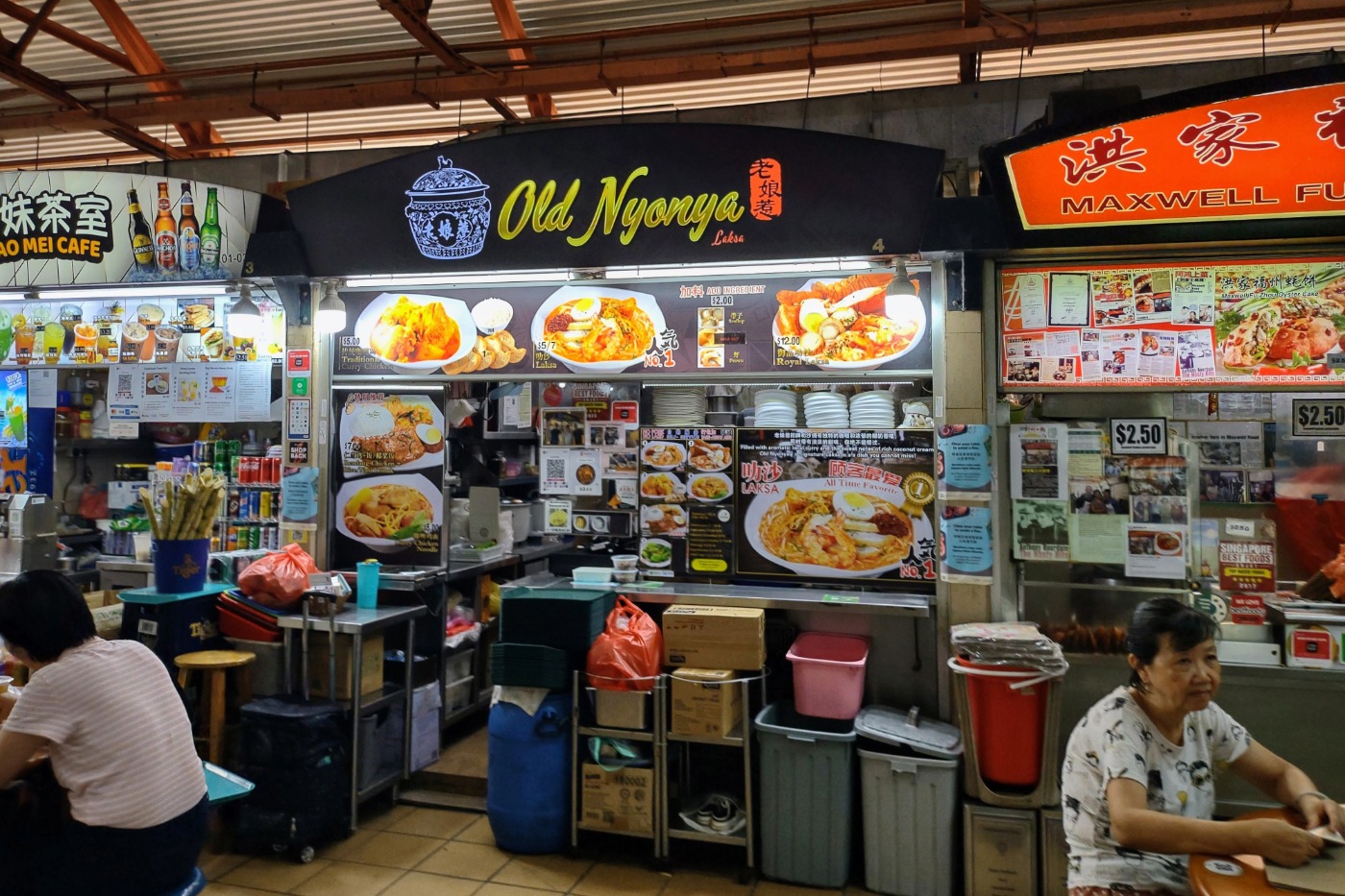
Some of my favorite Peranakan dishes are: Ayam Buah Keluak (Chicken cooked with a detoxified poisonous nut!), Nasi Ulam (rice with herbs- there is also a Malay version), Kueh Pie Tee (julienned vegetables in a crispy cup) and Laksa (noodles in a spicy coconut gravy.)
I’ll be honest: the best Peranakan food will be found at your Peranakan friend’s house, and not in a restaurant. (Authentic Peranakan cooking takes hours- it’s a labour of love- and it isn’t profitable to use traditional cooking methods in a commercial eatery!) Since most of you unfortunately won’t have access to Peranakan homes, here are some of the Peranakan restaurants that I visit.
Alyson says: I do love a laksa, so does Chef and the kids. Unfortunately, after a severe allergic reaction to vegetarian laksa in Malaysia a few years back, I was too nervous to try it on this trip. I did eat prawns and even lobster this time and had no problems, touch wood. We’ve eaten at a Nyonya restaurant in Malaysia and on this trip we spotted this stall in a hawker centre in Chinatown.
Where to Eat Nyonya Food
Candlenut: refined Peranakan food, with a Michelin star.
Indocafe: traditional Peranakan, slightly cheaper than Candlenut, located in an old-school black-and-white heritage house.
You can also head to Katong in the East, traditionally the area where the Peranakans lived.
Nasi Lemak
Fragrant rice cooked in coconut milk, and served with various side dishes. It can come with anything from sliced cucumbers, egg and fried fish, to curry and fried chicken.
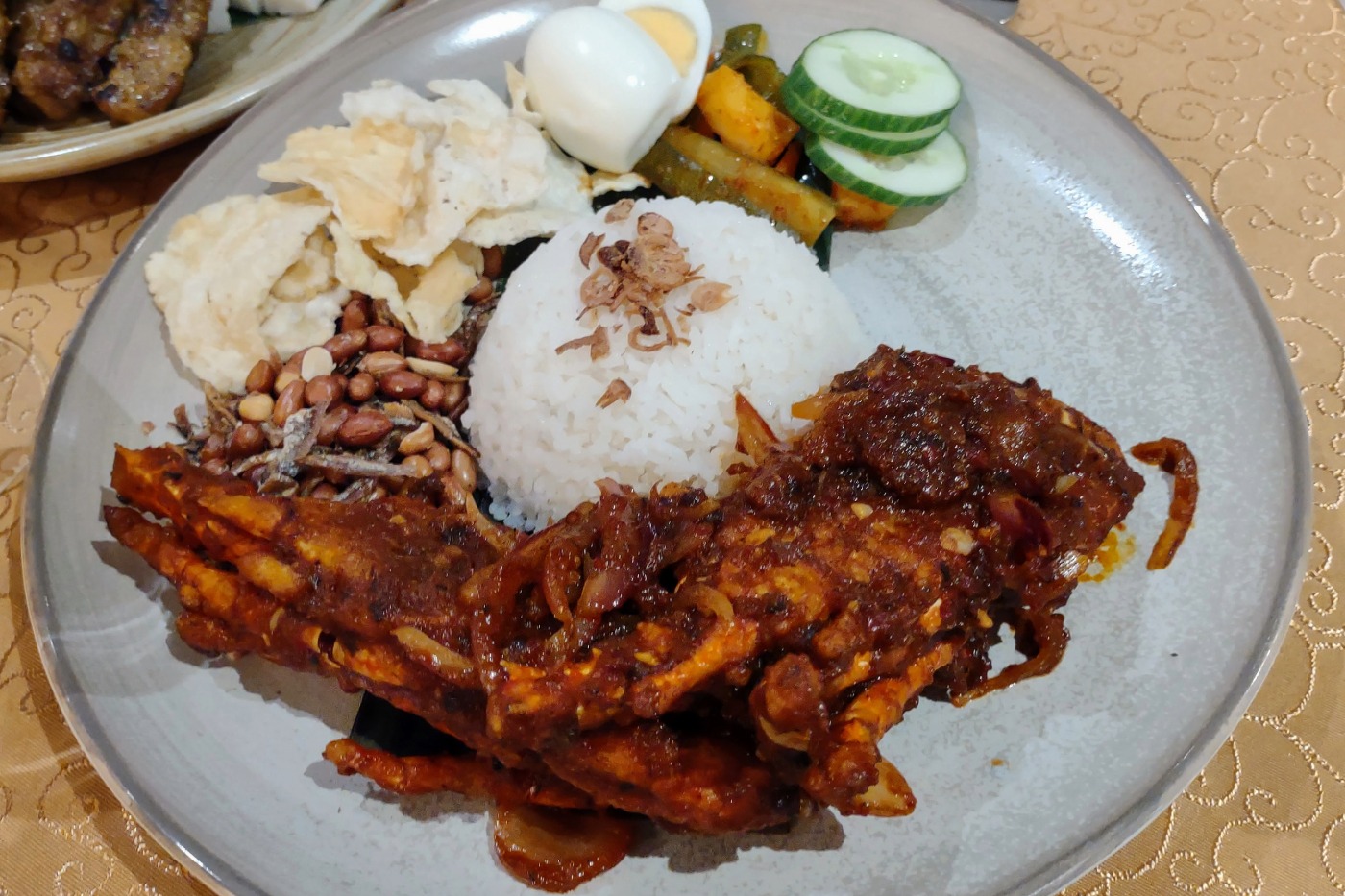
Where to Eat Nasi Lemak in Singapore
Coconut Club: This is one of the best Nasi Lemaks you will get in Singapore and, unfortunately, also one of the most expensive. A basic plate will cost about US$11, excluding service charge and GST. The price goes up if you add on more ingredients, such as fried chicken, beef rendang, or otah. I usually bring my visiting friends here and, without fail, they’ve always loved it!
Selera Rasa Nasi Lemak: Found in Adam Road hawker centre, this stall is so famous, the Sultan of Brunei is said to be a fan However, the queues can be horrendous (I find that the longer I queue, the more critical I become of food!) Adam Road food centre is also quite small, with only 32 stalls, so there aren’t a lot of local dishes that you can try there.
Curry Puffs
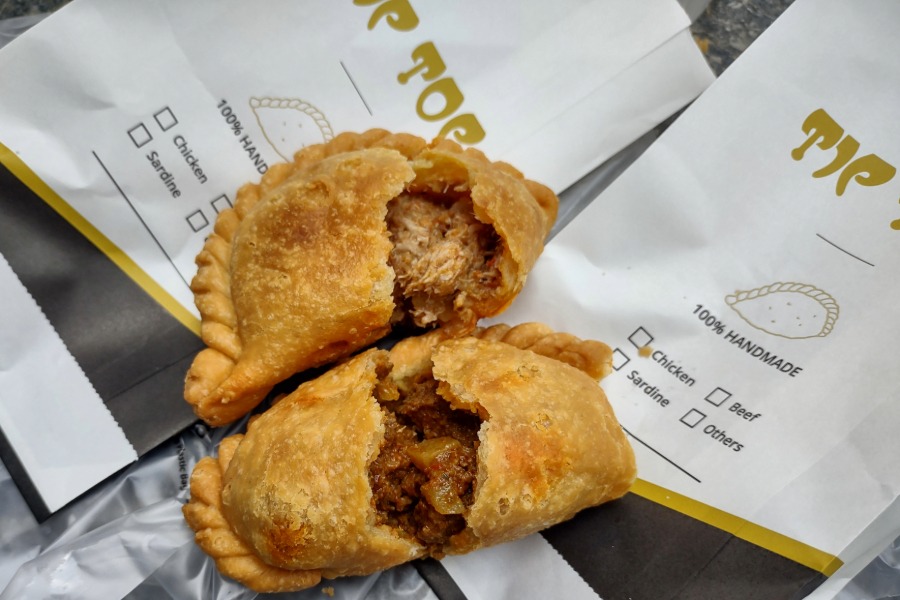
“Somewhat similar to a samosa, curry puffs consist of a spicy potato curry (sometimes with chicken and egg) enclosed in fried pastry. If you find yourself a convert, here is a curry puff recipe that you can make at home! (Freezer friendly too!)
Where to Eat Curry Puffs in Singapore
1A Crispy Puffs: The most famous Curry Puff stall in Singapore is Old Chang Kee- they even have stalls in London!- but I prefer the ones from 1A. 1A has several outlets in Singapore but the typical visitor will find the one located in the Takashimaya basement (in Orchard Road) the most conveniently located.
Putu Piring
Asian desserts are quite different from Western ones (no butter, for example!) However, if you’re ready to try some local sweets, try this steamed rice cake with a gula Melaka brown sugar filling. It’s even been featured in Netflix’s Street Food!
Where to Eat Putu Piring
Haig Road Putu Piring: They have several outlets but I find the original outlet in Haig Road Market still does it the best, as it has the best proportion of rice flour to gula Melaka.
Alyson says: We’ve had putu in the south of India as a carb with curries. We liked it. It’s fermented and has a nice sour tang, like idly. My general lack of a sweet tooth caused me to give this one a pass.
More questions about what to eat and where to eat it in Singapore? Let me know in the comments! ” by Zhou Zenru
Indian Food in Singapore
The team at World Travel Family know Indian food pretty well after months in India and more months indulging in authentic Indian food in Malaysia. We’re all particularly fond of South Indian food, and there’s plenty of that in Singapore. The Indian Community centres around Little India, and that’s where you’ll find most of these restaurants.
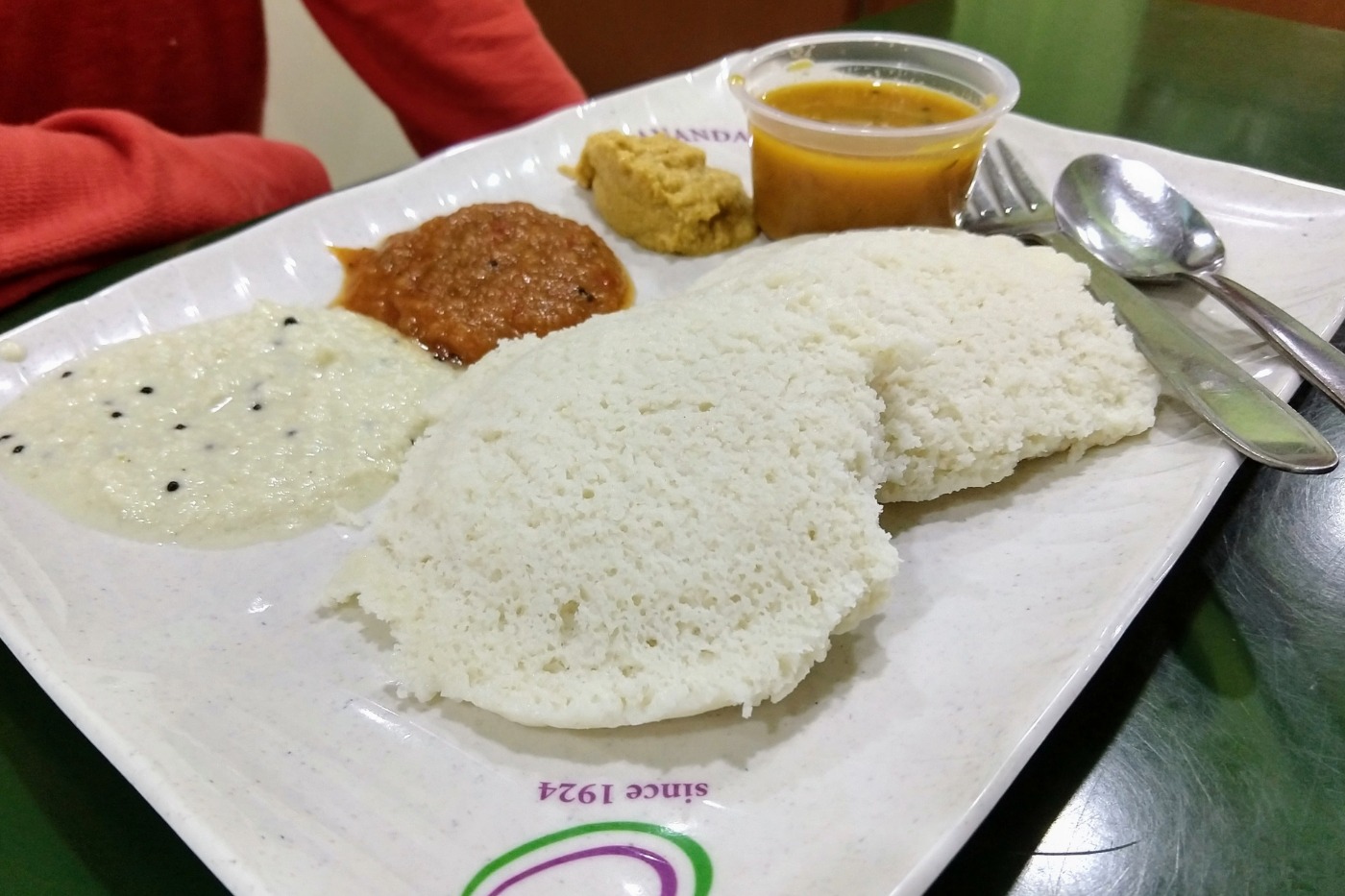
We did partake of the Indian this time, using some tips from the Singaporean lady we already mentioned. This will have to go in another post, this one is too long!
If you’re interested, we already have a post on the Indian foods we love in Malaysia, the food is pretty much the same.
Food Wins and Recommendations in Singapore By World Travel Family
For what it’s worth, we just wanted to mention a few sweet treats and food wins we tried in Singapore that we think are worth your time. There is an ice cream shop in the street markets of Singapore’s Chinatown. Their Merlion-shaped ice cream on a stick was amazing. We loved the sea salt and melon flavour. The store owner took a photo of us. She was nice. D had his eyes closed but there’s no going back.
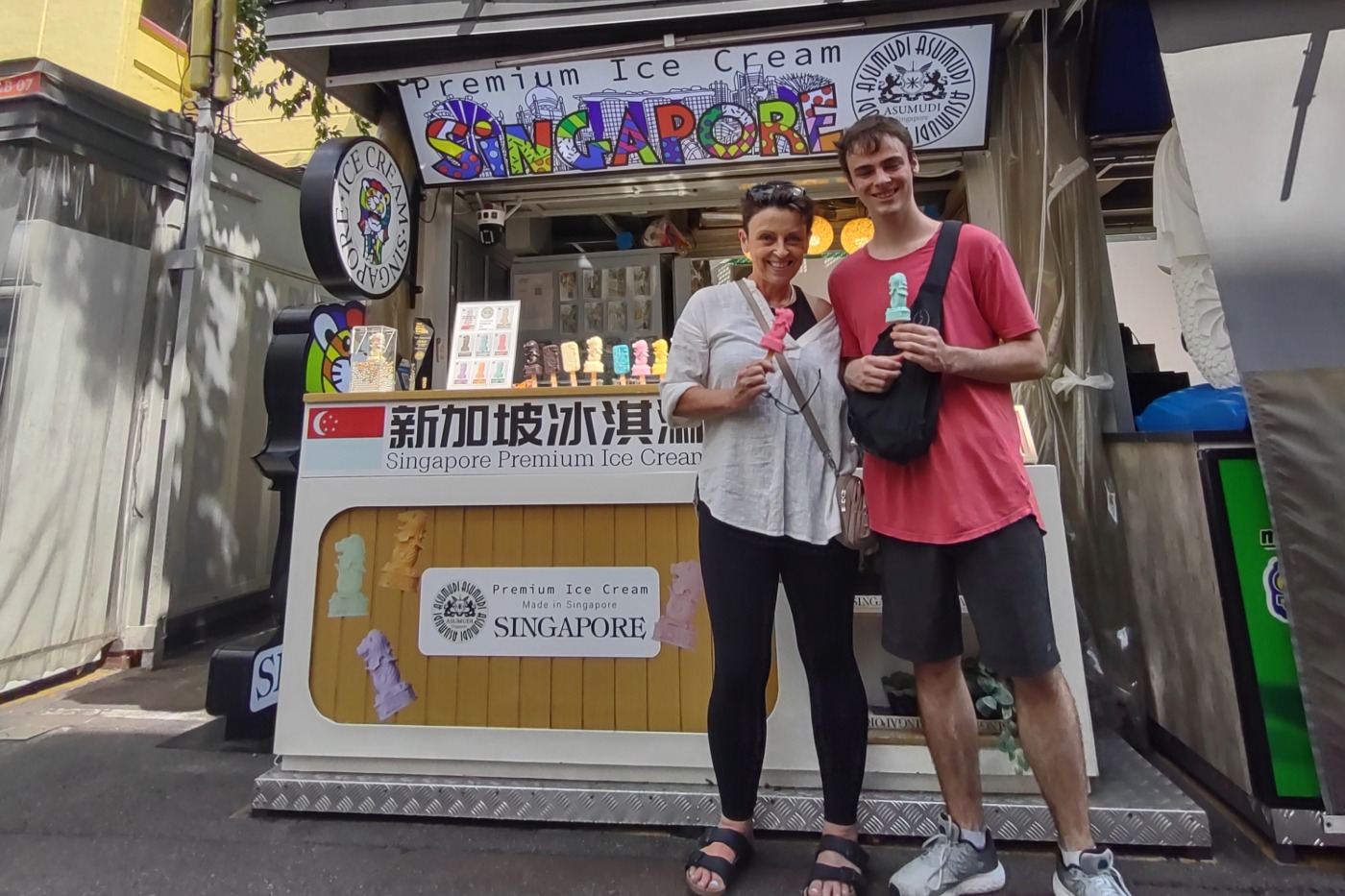
I mentioned in our post yesterday on how we travel carry-on-only, that I wear a lot of my sports gear to travel. It packs light and washes and dries fast. Here we have a lovely example of me wearing running tights and a running top. I just throw a big shirt over the top for cover. It does the job and I’m not too bothered about style. The Birkenstocks didn’t like Singapore at all. I threw them away a few days later. D is in his running shoes because we both did some running on this trip. His other shoes were his wedding shoes and they were useless for Singapore heat in August. He runs much faster than me, he’s 37 years younger!
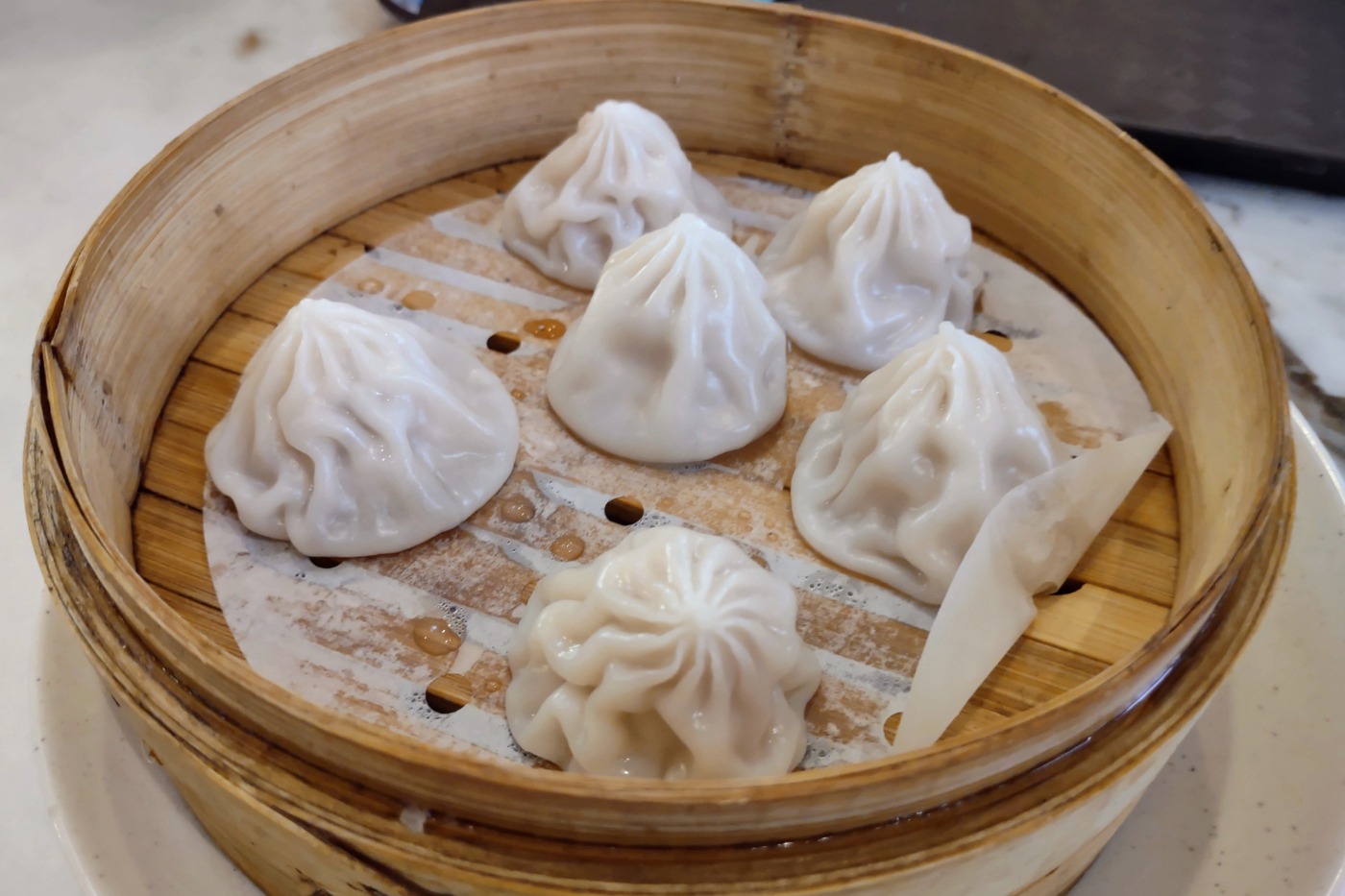
I should mention that we didn’t bother getting a SIM card for Singapore. Had we bought one it would have been much easier to look up what all these dishes were. We normally buy them from SIM corner (here) but for some reason, we didn’t.
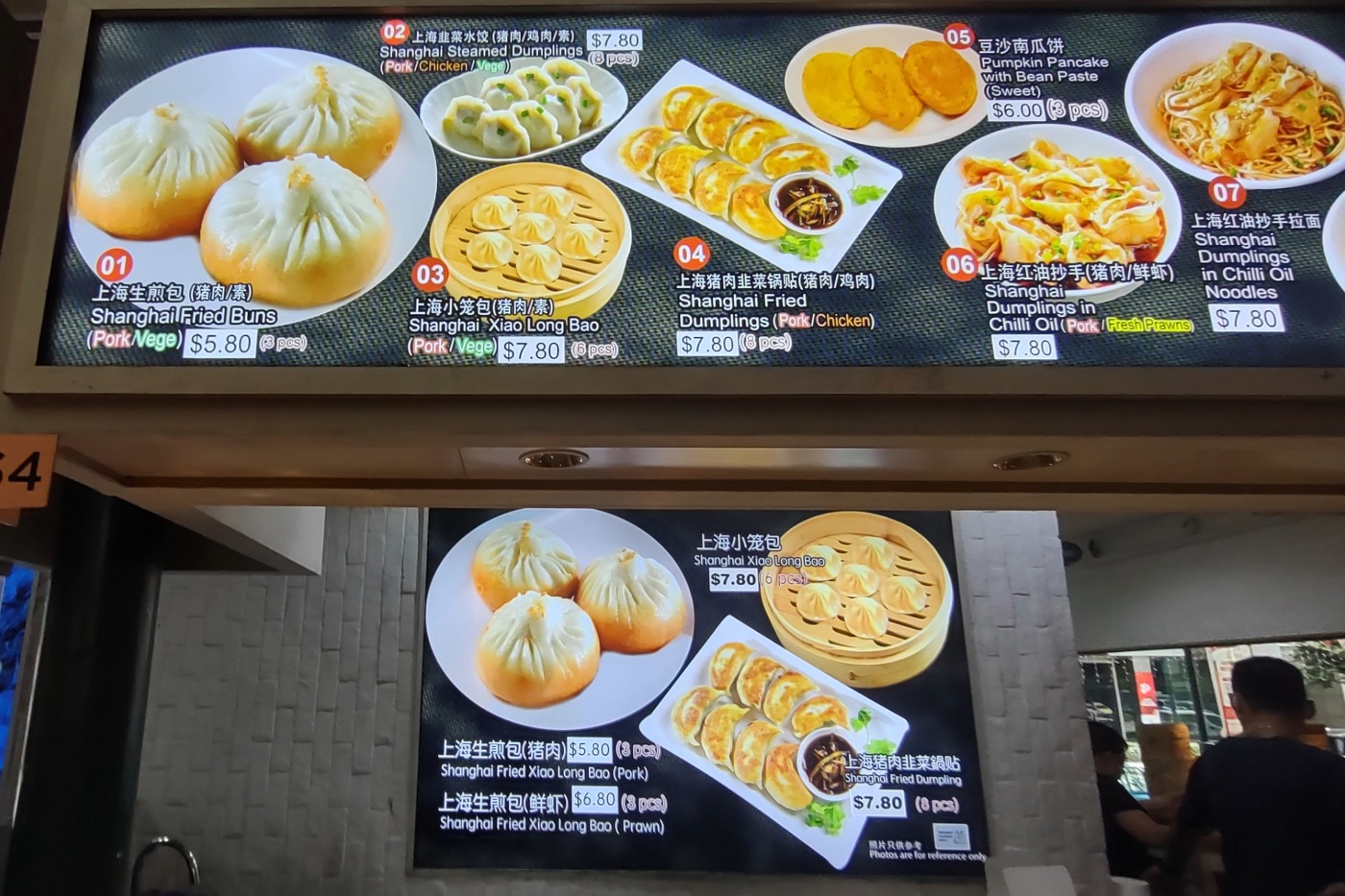
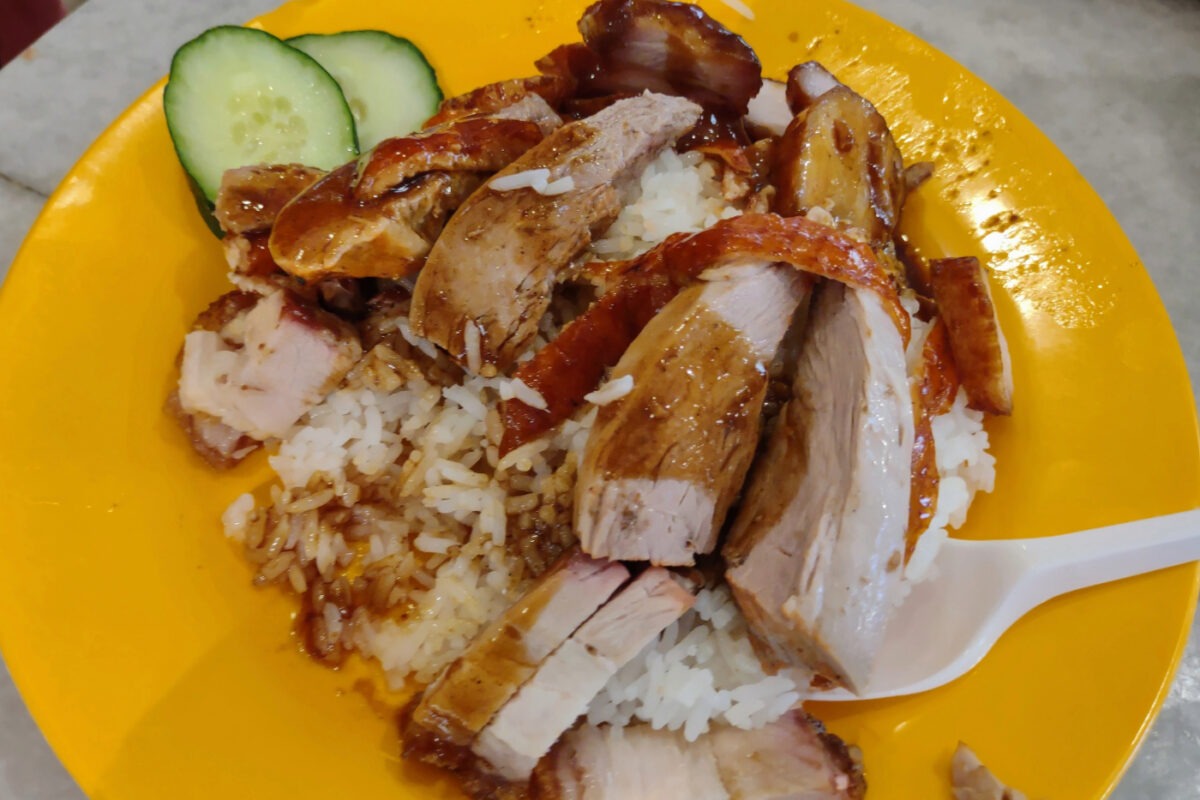
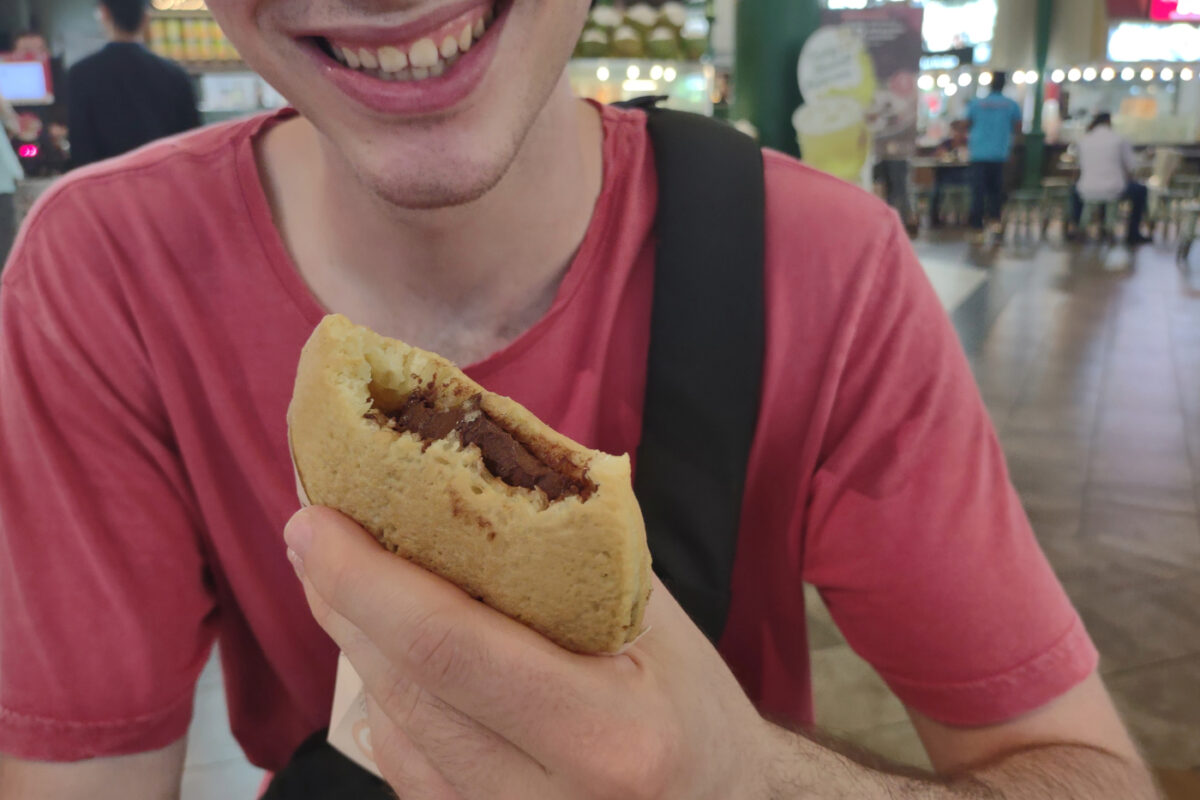
One final mention for deep-fried ice cream, which my son just had to try. It was ice cream sandwiched between two pieces of sliced white bread and deep-fried. He said it was OK, and had to be tried. This was also in the basement hawker centre at Changi Airport.
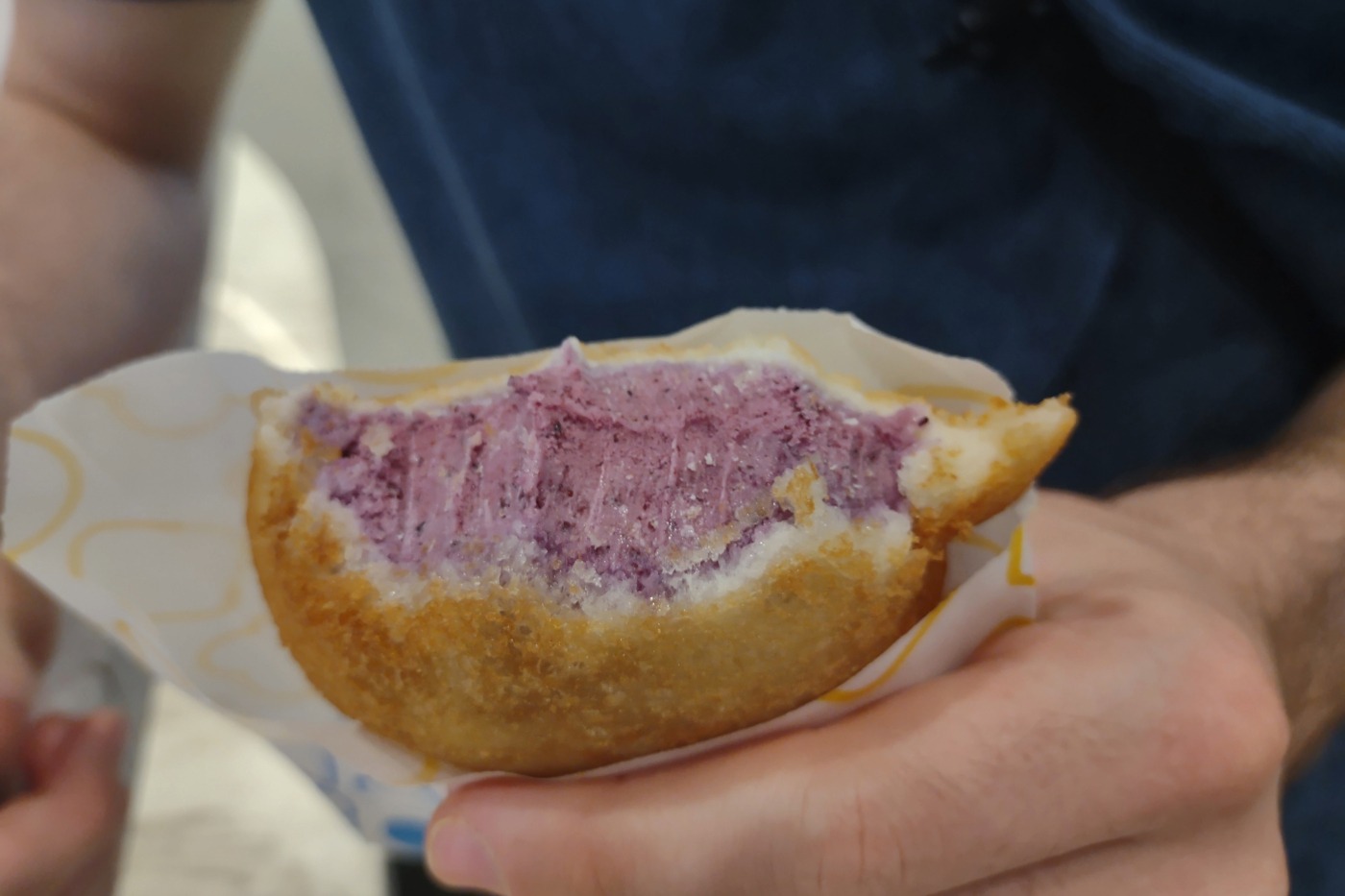
I’d like to thank Zhou again for giving us her tips and insights. It was very useful to have some insider knowledge and not blunder around totally clueless as we did last time for a Christmas break. That said, we still didn’t do too well in finding the foods she suggested. But we did have a lot of fun on our own custom Singapore food tour. Neither of us gained any weight on this trip. That could be because we were walking up to 35 Km per day on our quest for food. You couldn’t do that with small kids!
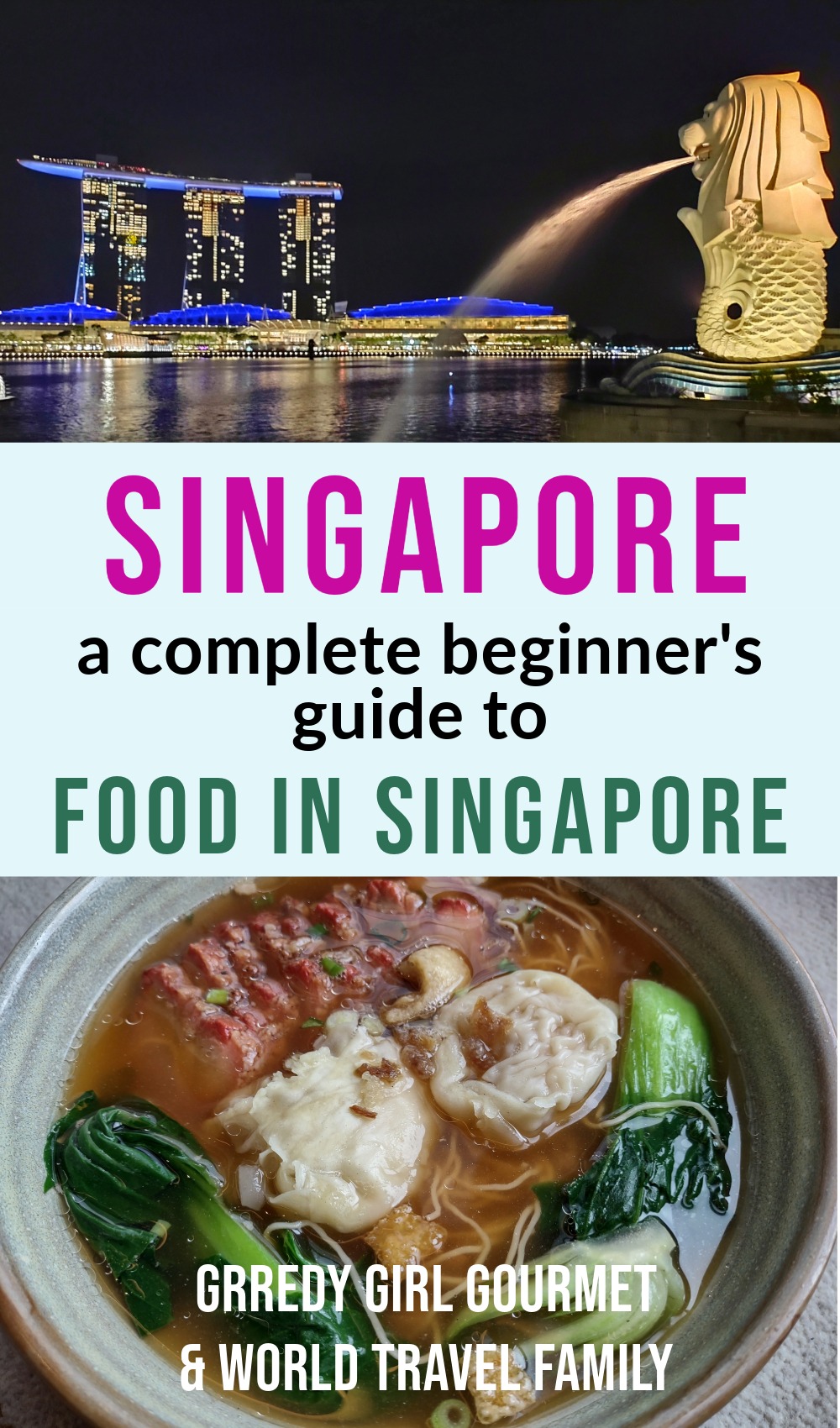
We hope you find this guide handy for your trip. Bookmark it to Pinterest by hovering over the image above. Thanks, as always, for coming along for the ride. We really value our readers and some are old friends now. The next blog post may be staying at The Fullerton Hotel, or eating at a Michelin Guide Street Food stall. But it will be soon! Hopefully, Zhou will come along in the comments to answer your questions and ours.
If you'd like to hire a car during your stay, use this car rental comparison tool to find the best deal!
We also suggest you take a look at this company to get a quote for all kinds of the more tricky adventure or extended travel insurance.
Try Stayz / VRBO for an alternative way to find rentals on homes/apartments/condos in any country!

